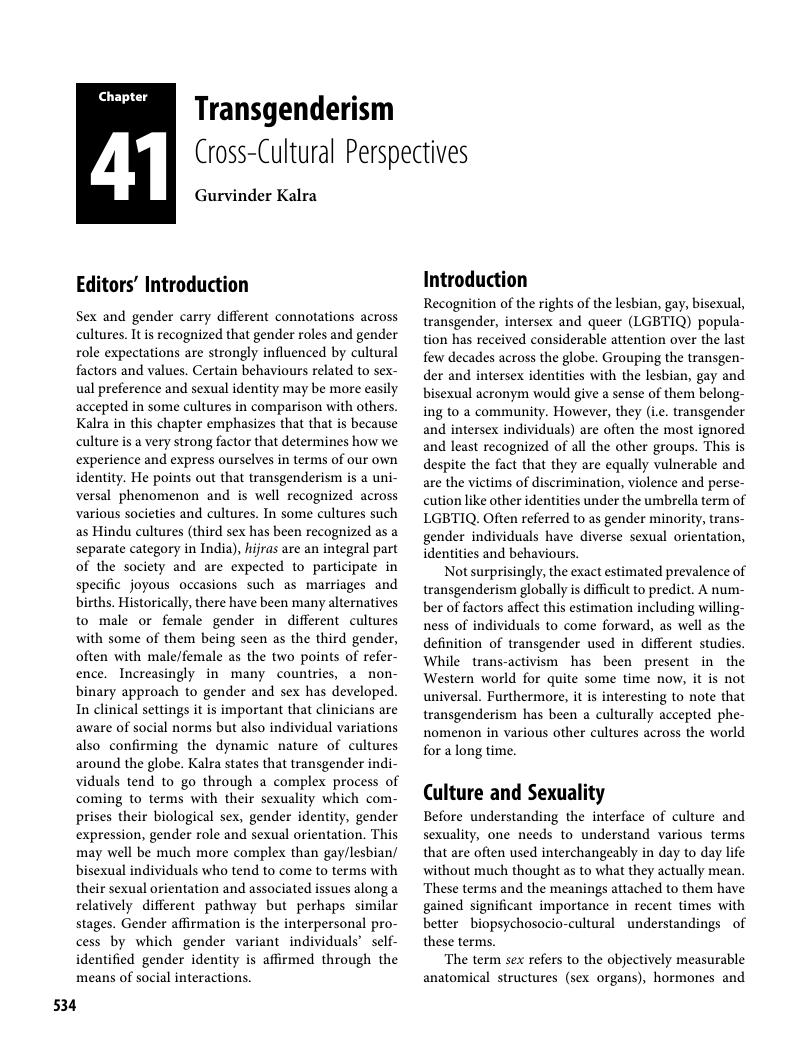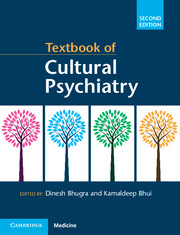Book contents
- Textbook of Cultural Psychiatry
- Textbook of Cultural Psychiatry
- Copyright page
- Dedication
- Contents
- Contributors
- Foreword
- Preface to the Second Edition
- Section 1 Theoretical Background
- Section 2 Culture and Mental Health
- Section 3 Culture and Mental Disorders
- Section 4 Theoretical Aspects of Management
- Section 5 Management with Special Groups
- Chapter 38 Intellectual Disabilities across Cultures
- Chapter 39 Child Psychiatry across Cultures
- Chapter 40 Management of Sexual Dysfunction across Cultures
- Chapter 41 Transgenderism
- Chapter 42 Refugee Mental Health
- Chapter 43 Working with Elderly Persons across Cultures
- Chapter 44 Cultural Overlays in Consultation–Liaison Psychiatry
- Section 6 Cultural Research and Training
- Index
- References
Chapter 41 - Transgenderism
Cross-Cultural Perspectives
from Section 5 - Management with Special Groups
Published online by Cambridge University Press: 16 March 2018
- Textbook of Cultural Psychiatry
- Textbook of Cultural Psychiatry
- Copyright page
- Dedication
- Contents
- Contributors
- Foreword
- Preface to the Second Edition
- Section 1 Theoretical Background
- Section 2 Culture and Mental Health
- Section 3 Culture and Mental Disorders
- Section 4 Theoretical Aspects of Management
- Section 5 Management with Special Groups
- Chapter 38 Intellectual Disabilities across Cultures
- Chapter 39 Child Psychiatry across Cultures
- Chapter 40 Management of Sexual Dysfunction across Cultures
- Chapter 41 Transgenderism
- Chapter 42 Refugee Mental Health
- Chapter 43 Working with Elderly Persons across Cultures
- Chapter 44 Cultural Overlays in Consultation–Liaison Psychiatry
- Section 6 Cultural Research and Training
- Index
- References
Summary

- Type
- Chapter
- Information
- Textbook of Cultural Psychiatry , pp. 534 - 542Publisher: Cambridge University PressPrint publication year: 2018

